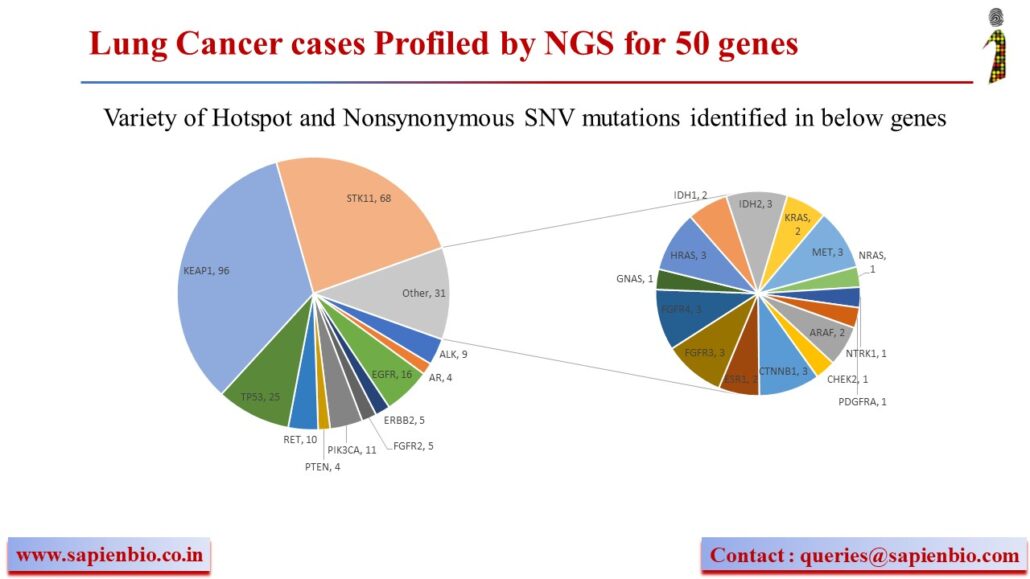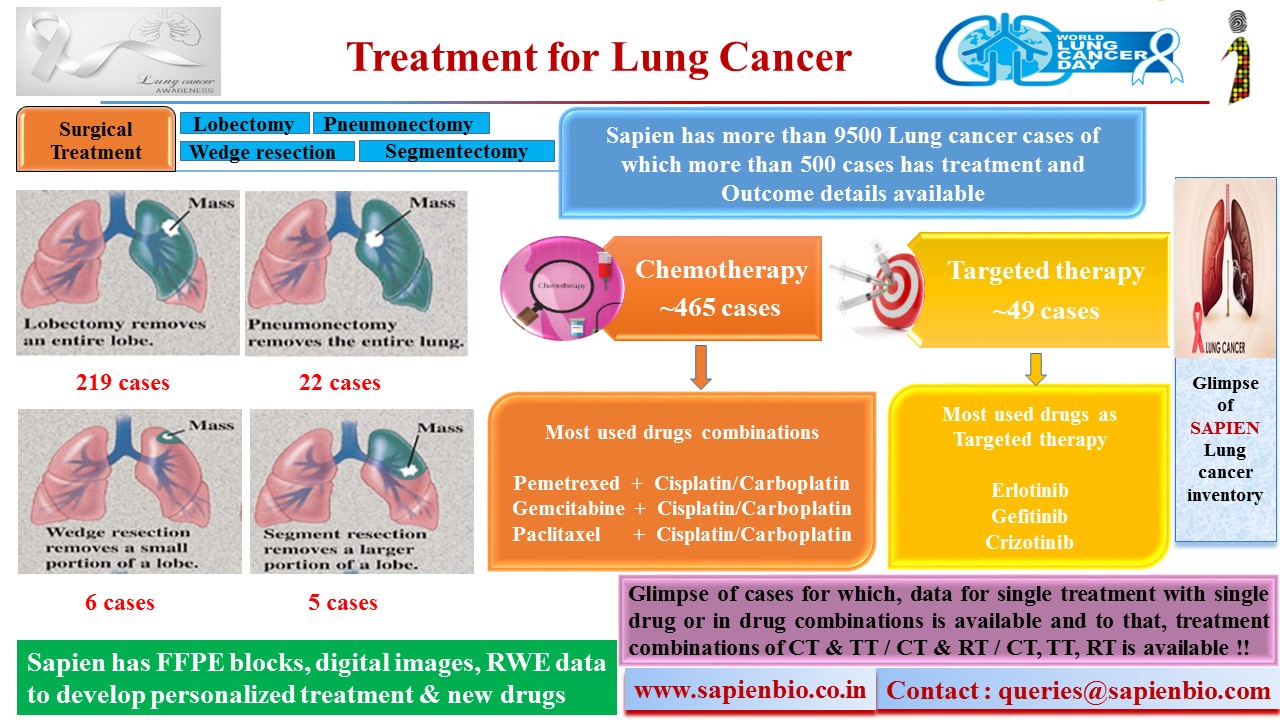Building Genotype-Phenotype Correlation Data for Lung Cancer in India
Sapien is curating real world data for the lung cancer cases in the biobank. While 90-95% of our NSCLC samples are biopsies which are mostly exhausted in patient diagnosis and subsequent clinical #biomarker evaluation, the resection samples are being characterized genomically in Oncomine panel to correlate the demographic, diagnostic, treatment and outcomes data with genetic mutations.
The first of such 48 cases showed a very high number of SNVs (479), CNVs (5), Fusions (6) and indels (14). Highest number of mutations were observed in KEAP1 (43.2% of all mutations), followed by STK11 (31.5% of all mutations).



Recent Comments